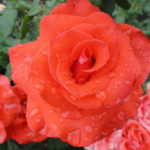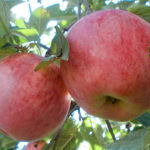Rose Ascot
The emergence of new varieties of roses is a natural process. After all, a rose is perhaps the only flower that is presented not only in a huge assortment of colors, but also in various classifications - floribundas and climbers, shrubs, climbing, grandiflora, miniature and many others. But among them, perhaps the most famous is the hybrid tea group. Among the novelties of this group, presented in raspberry color, the Ascot variety is of genuine interest. This beauty immediately conquered even sophisticated rose growers. She is not only hardy, unpretentious, but also has amazingly beautiful flowers. For its high resistance, it is ranked among the group of classic park roses. Despite the fact that the variety belongs to hybrid tea, it bears little resemblance to plants from this group. On English-language sites, it is often referred to as scrubs, and the shape of the flowers in the variety is unusual.
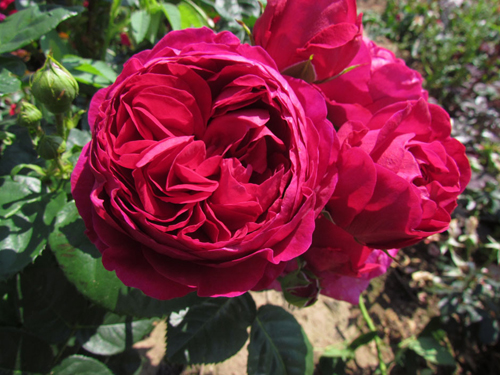
History of creation
The spectacular rose belongs to the German selection. It was created by Hans Jürgen Evers (Evers). But the novelty was presented in 2007 by the Rosen Tantau company, where the famous breeder worked. The name Ascot is used for exhibitions and is a registered trademark. Unique code name TAN01757. Unfortunately, nothing is known about the parental forms of the beautiful German woman, as well as about her awards.
Description
Bushes are upright, low, but quite dense and powerful, well leafy. Height is from 60 to 80 cm, but many growers from warm regions note that the plant in favorable conditions can grow up to 100 or even 150 cm.At the same time, the Ascot crown is compact, about 50 cm wide. Branching is good, shoots are straight, not thick, but tough and sturdy. The spines are small and few in number. The leaves are rather large, rich green, with a shiny surface. The shape of the leaf blade is lanceolate. At the ends of the shoots, both single flowers and multi-flowered slightly drooping racemes are formed, consisting of 3 - 4 or more (sometimes up to 10) buds.
The buds are round-ovate, dense. The flower is incredibly beautiful, resembles an old rose and is nostalgic. It is quite full, has a spherical shape, and is very similar to a peony, especially at the beginning of dissolution. The outer petals are folded in a bowl, while the inner ones are more chaotic. Then, in the stage of full disclosure, the rose takes on a lush cup-shaped shape and flaunts with wavy petals. Sometimes you can see the yellow center. The rosette is rather large, with a diameter of 8 - 11 cm, while it is also densely doubled, it consists of 26 - 40 petals.
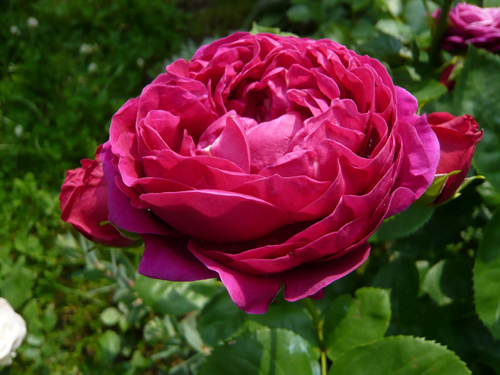
The color of Ascot is stated as crimson, but it can also be described as purplish crimson, red with a tinge of violet, beetroot or purple-violet. At each stage of the dissolution, flower petals play with tints of shades. At the beginning, the color is bright and saturated, but towards the end of flowering it fades noticeably, cold pink shades appear in it.
Flowering period
As a representative of the hybrid tea group, the beautiful Ascot is a re-flowering crop. Blooms in tides throughout the season. Rose growers call this variety a very generous, real hard worker. Depending on the region of cultivation and care, it produces up to three flower waves with small, but sometimes noticeable interruptions. Flowering is distinguished by its multi-flowering and duration, begins in June and ends with the onset of cold weather. True, the autumn bloom will be more small-flowered, but, nevertheless, very bright. The flowers open slowly, allowing you to admire yourself at every stage of the opening of the outlet. The opened flower retains its decorative effect for quite a long time - about two weeks and even a little longer. Almost until the very moment of flowering, the rosette does not lose its charming old shape. At the faded rosette, the petals crumble. To maintain decorativeness and spur bud formation, faded heads must be cut off in time.Despite its bright beauty, the culture has a faint aroma, but it is unusually pleasant, fresh, with citrus notes.
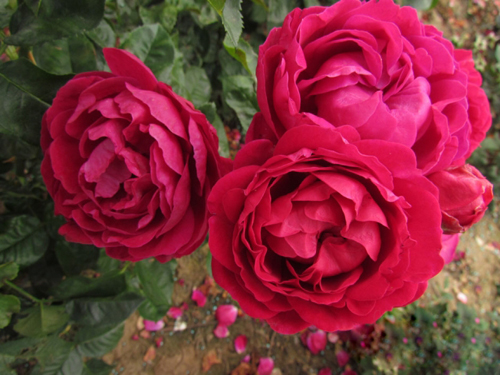
Characteristics
- Planted in spring, Ascot is in a hurry to please the grower with wondrous nostalgic roses this season. But as experienced rose growers note, it is best to break off the formed buds in order to allow the plant to take root and adapt in a new place;
- the culture is quite frost-resistant. It is stated that Ascot belongs to USDA zone 6 (according to the system adopted by the US Department of Agriculture). This means that the perennial is able to withstand frosts from -20.6 ° C to -23.3 ° C. But many rose growers note that the variety winters well in USDA zones 5 and 4, albeit with shelter;
- immunity is good. Our heroine in ordinary years shows high resistance to major diseases, including powdery mildew and black spot. But in unfavorable years, without additional prophylaxis, the culture can still get sick. But, in general, despite a few complaints, most flower growers are very satisfied with the health of their pet;
- rain resistance is good. According to the observations of rose growers, the opened flowers, with rare exceptions, can withstand even prolonged precipitation. True, this does not apply to unblown buds, they may not open at all;

- drought resistance is average, the petals are very afraid of the burning rays of the sun, they begin to melt and dry out. Shade tolerance allows growing the variety in light partial shade, and this is invariably used by flower growers in the southern regions. But the sun of central Russia of the Ascot variety is very much to your liking;
- beautiful flower bouquets on strong shoots are great for cutting. In a vase, roses are able to maintain their freshness and ancient shape for up to 10 days or more.
Agrotechnics
Planting time, depending on the region, is spring or autumn. The plant is unpretentious to soils, but still shows the best decorative qualities and growth abilities on light and nutritious loams. In temperate climates, it is best to find a well-lit planting site. In the south, it is a different matter, the morning and evening sun will be quite enough, and light partial shade during the active sun will help preserve the freshness of the flower rosette. Lowlands, wetlands are not suitable for planting. The plant loves watering, but will not put up with waterlogged soil. In order for Ascot to show maximum flowering, proper feeding is needed. In the spring, nitrogen-containing fertilizers are used; in the summer, phosphorus and potassium are preferred. Preventive treatment of roses must be carried out in spring and autumn, in summer - as needed. A winter shelter above the bush is built only in cool regions; in warm regions, you can only mulch the root zone. Pruning is an important step in caring for a hybrid tea crop, but there is nothing difficult about it. In autumn, overgrown shoots are slightly shortened, broken and diseased branches are removed. In the spring, as soon as the buds wake up, the main shoots are shortened to a height of 3 - 5 buds.
The attractiveness of Ascot for flower growers lies not only in its external data. This variety is unpretentious to care for, has a moderate size, making it easy to place even in a small garden area. Good frost resistance, the ability to quickly recover and a fairly strong immunity are the undoubted advantages of the variety. Perhaps the only negative is the intolerance of the southern sun, which negatively affects the beauty of the rose. All that a culture needs is timely watering, feeding and preventive treatment. And then the florist can relax in the gazebo, enjoying the marvelous flowers of the ancient form and inhale a light, fresh aroma. And to increase the decorative effect, up to three seedlings can be planted in one planting hole.
